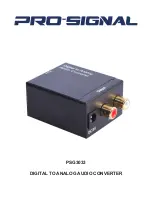
3 - INSTALLAZIONE E MESSA IN SERVIZIO
3 - INSTALLATION AND START UP
fig. 5
Connettore X17
X17 Connector
3.8 COLLEGAMENTO ALLE CANALIZZAZIONI
• Dimensionare i canali in funzione delle esigenze di ventilazione di
ogni settore dell'impianto e delle pressioni statiche rese disponibili
dall'unità (al netto di eventuali accessori, ad esempio moduli a ca-
nale, silenziatori, ecc.).
• Utilizzare per quanto possibile canali coibentati, al fine di ridurre le
perdite termiche per trasmissione, attenuare la rumorosità verso gli
ambienti e scongiurare la formazione di condensa.
• Evitare l'uso di brusche deviazioni o curve in corrispondenza delle
prese prementi.
• Evitare l'immissione o l'espulsione diretta, non canalizzata.
• Comparare l'emissione sonora dell'unità con il comfort acustico richiesto
per l'ambiente e, se del caso, adottare idonei attenuatori acustici.
3.9 COLLEGAMENTO E MONTAGGIO RISCALDATORE (BE)
• Il riscaldatore elettrico è predisposto per il collegamento a monte e a
valle con un canale dello stesso diametro nominale; il canale deve es-
sere completamente inserito sul collo del riscaldatore fino ad arrivare in
battuta, in modo da calzare la guarnizione di tenuta.
• Si consiglia di montare il riscaldatore nelle immediate vicinanze del-
l’unità a cui esso è associato.
Nel caso del BE le temperature am-
biente di installazione sono da -25°C a +30°C e il grado di
protezione elettrico è IP40.
• Il riscaldatore può essere installato sia orizzontalmente che vertical-
mente; nel caso di riscaldatore elettrico installato orizzontalmente,
la scatola elettrica deve rispettare una delle posizioni di montaggio
mostrate in fig. 5.
• Supportare adeguatamente il riscaldatore, comunque in modo tale
da non sollecitare le connessioni sulla macchina.
• Il riscaldatore (sia elettrico che ad acqua) non deve essere isolato.
Nel caso di riscaldatore BE la temperatura di mandata aria non
deve superare i 50°C e la velocità dell’aria dev’essere non inferiore
a 2 m/s. Assicurarsi che il riscaldatore si accenda solo se il ven-
tilatore è in funzione. Dopo l’arresto del riscaldatore il flusso d’aria
deve continuare per almeno 30 secondi.
• Le connessioni ed i cavi usati per esse sono a cura di chi installa.
• Per l’alimentazione del riscaldatore elettrico usare un cavo a 3 poli
(linea, neutro e terra) dimensionato in base al suo specifico assor-
bimento, funzione del modello. Per il passaggio del cavo utilizzare
gli appositi passaggi sul lato quadro elettrico.
•
Connettere il cavo di segnale del riscaldatore nell’apposito con-
nettore sulla scheda denominato X17, (Potenza Max. Amp. 1,5
kW)
(figura 6-7).
fig. 6
3.8 CONNECTION TO AIR DUCTS
• Size air ducts depending on ventilation needing of each air plant sec-
tor and unit external static pressure (including possible additional air
resistances due to duct sections, sound attenuators, etc.)
• Use insulated as far as possible ducts, to reduce heat loss, to mitigate
the noise into the room and to prevent condensation
• Avoid abrupt deviations or curved air ducts on unit air outlets
• Avoid air supplied directly into the room and air expelled directly into
the atmosphere; prefer short or long duct connection
• Compare unit sound level to the required room acoustic comfort and,
if necessary, install suitable sound attenuators.
3.9 (BE) HEATER MOUNTING & CONNECTION
• The electric heater shall be connected both upstream and down-
stream to a duct of the same nominal diameter; the duct must be fully
inserted on the heater sleeve up to the stop, so that it fits the airtight
gasket.
• It is suggested to mount the heater as close as possible to the unit
to which it is connected.
For BE heater the ambient temperature
must be from -25°C to +30°C; degree of protection IP40.
• The heater can be installed both horizontally and vertically; in case
of horizontal electric heater, the electric box must be placed accord-
ing to one of the positions shown on fig. 5.
• The heater must be adequately supported, so that unit connections
are free from any stress.
• The heater (both electric and water type) must not be insulated.
For BE heater, the supply air temperature must be lower than 50°C
and the air speed must be higher than 2 m/s. Make sure that the
heater is turned ON only when the fan is switched on. The fan must
continue to run at least 30 seconds after the heater has been tur-
ned off.
• Connections and cables that are used for them have to be supplied
by the installer.
• For power supply of the electric heater use a 3-wire cable (line, neu-
tral, ground), sized for the specific current of the selected model.
First, pass along the free ends of the three cables from the inside of
electrical board to the outside, through the glands on the basic unit.
•
Connect the electrical activation cable of the heater to the spe-
cific connector X17 on the board
(fig. 6-7)
for the board connec-
tion (Power Max. Amp. 1,5 kW).
Manuale di Installazione e Manutenzione unità di recupero calore ad altissima efficienza -
Very high efficiency heat recovery unit
pag. 22
















































